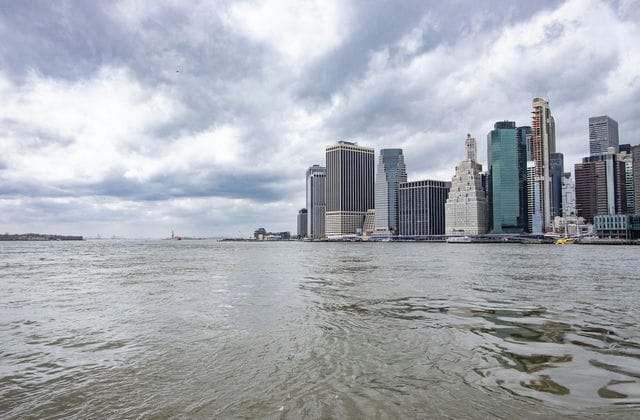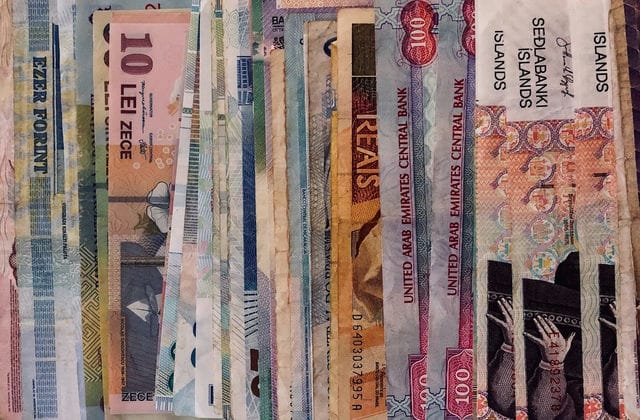Overview of the Bubble Economy
A bubble economy: an economic phenomenon in which the excessive growth of virtual capital and related transactions are increasingly divorced from the growth of physical capital and the growth of the industrial sector, and in which the prices of financial securities and real estate soar and speculative transactions become extremely active. The bubble economy is characterized by financial speculation, resulting in a false socio-economic boom that is bound to burst, leading to social unrest and even economic collapse.
The bubble economy can be divided into three phases: the formation phase of the bubble, the inflation phase of the bubble and the collapse phase of the bubble.

The term "Bubble" can be traced back to the "South Sea Bubble Incident" which took place in the UK in 1720, when the South Sea Company monopolized trading rights to Spain under the authority of the British government, and promoted the high growth of its profits to the public, thus triggering an unprecedented boom in South Sea shares. Without the support of the real economy, the shares fell rapidly over time, expanding and bursting like a bubble. Other early bubbles include the Dutch "Tulip Affair" and the French "John Lowe Affair". In the modern economy, various types of financial bubbles have been created. Under modern economic conditions, the emergence of various financial instruments and financial derivatives, as well as the liberalization and internationalization of financial markets, have made the occurrence of bubble economies more frequent, more widespread, more damaging and more complex to deal with. The root cause of a bubble economy is the deviation of the virtual economy from the real economy, i.e., the excess of virtual capital over the virtual value generated by real capital.
Fictitious capital is capital in the form of securities (including stocks, bonds and real estate mortgages) that generate a certain income stream for the holder.
Actual capital is capital in physical form in the form of factors of production and commodities.
There are no bubbles in the movement of productive capital or commodity capital because the movement of productive capital and commodity capital is mediated by flows in physical form, and the corresponding flows in monetary form, which are in the opposite direction, are approximately equal. It is therefore believed that bubble economies arise from the movement of virtual capital, and this is the source of the fact that they always originate in the financial sphere. Moreover, the special price structure of land as real estate makes land assets an asset with the attributes of virtual capital, while the interpenetration and integration of the financial sector and the real estate sector make it inevitable that every economic bubble is accompanied by the creation of a real estate bubble.
Two important reasons for the formation of the bubble economy
First, the macro environment is easy and there are sources of funds for speculation
The bubble economy is always occurring in the country's relatively lose money, economic development is relatively fast stage, the social and economic appearance of a prosperous, to the bubble economy to provide the source of funds for speculation. The commodity economy is characterized by cyclical growth. After a recession, the government often lowers interest rates and loosens the money to stimulate investment and consumer demand in order to kick-start economic growth. Some companies and individuals with capital in their hands first thought of investing it in resources that had the potential to retain their value, and this was the social basis for the growth of the bubble economy.
From 1955 to 1985, Japan completed its economic take-off and entered the ranks of developed countries, becoming the second largest economy in the world. With money in hand, Japanese companies and residents believed in the "myth of land", as Japan was an island nation with many mountains and few plains. Land became a scarce resource in Japan. As the economy grows, industrial and urban land use increases, while land prices, especially for urban real estate, tend to rise due to increased investment in land, such as infrastructure development. However, the Japanese absolutized this trend, believing that land prices would only go up and not down, to the extent that they used real estate investment as a way to preserve and increase the value of their assets. They began to create a land bubble and from the second half of the 1980s, land prices in Japan soared and speculators were able to secure more loans from banks against appreciated land and then seek new opportunities to speculate, so more and more money was chasing limited land, causing property prices to rise further. The banking sector in Japan was a great believer in the 'land myth' and in the second half of the 1980s, as financial liberalization and interest rate liberalization developed, competition between financial institutions increased and banks' funding costs tended to rise. Under these circumstances, banks turned to real estate as a way to seek high rates of return and financing for the property sector increased substantially. If we take March 1985 as the base period, by March 1991, the volume of lending by the banking sector increased by 60.6%, while the increase in lending to real estate was as high as 150.6% over the same period. The balance of bank loans to the real estate sector increased from �17.1 trillion in March 1985 to �42.8 trillion in March 1991, and the share of real estate loans in the balance of all bank loans rose from 7.2% to 11.3% over the same period. In the 1990s, the "land myth" burst along with the bubble economy, and loans secured by land became indigestible non-performing debts.
Secondly, the lack of social constraints on the formation and development of the bubble economy
From the development of the bubble economy, it can be seen that society has so far lacked an effective restraint mechanism on the formation and development of the bubble economy. The key to restraining the formation and development of a bubble economy is to monitor and control the various speculative activities that promote the growth of economic bubbles, but so far, society lacks the means for such monitoring. This speculative activity takes place between the parties to the speculation, a two-by-two trading activity, and there is no intermediary that can monitor it. The most critical step in the speculative process, the payment of the goods, is not monitored by a mechanism. Although payments are generally made through banks, they are merely collection and payment intermediaries who pay according to the instructions of their clients and have no control over the content of the payments, and the decentralized nature of banks does not allow them to monitor speculative activities. The government is external and cannot be in the middle of transactions between businesses. Moreover, the government is often too easily confused by the illusion of economic prosperity created by speculative transactions to realize the hidden speculative activities behind them until the problems have accumulated to a significant extent.

Following the land bubble in Japan, from the mid to late 1980s onwards, there was a nationwide boom in urban land redevelopment and a subsequent surge in land prices, with the price index for commercial land in six major urban economic areas, including Tokyo, Osaka and Nagoya, rising by 53.6% in 1985 compared to 1980, and by 525.9% in 1990 compared to 1980. During this period, the national average price of land in Japan also increased by more than a factor of one. Approximately half of Japan's population owns land and approximately 20% of the population has the right to inherit land. Thus, with the rise in land prices, most Japanese felt that their property had increased in value by a factor of 1 to 2 during these years. On 22 October 1991, officials from the Economic Planning Agency of Japan (EPA) were still talking about the boom in the Japanese economy at a regular cabinet meeting, but a few days later the economic situation took a sharp turn for the worse, with bankruptcies increasing. The number of bankruptcies increased dramatically.





























